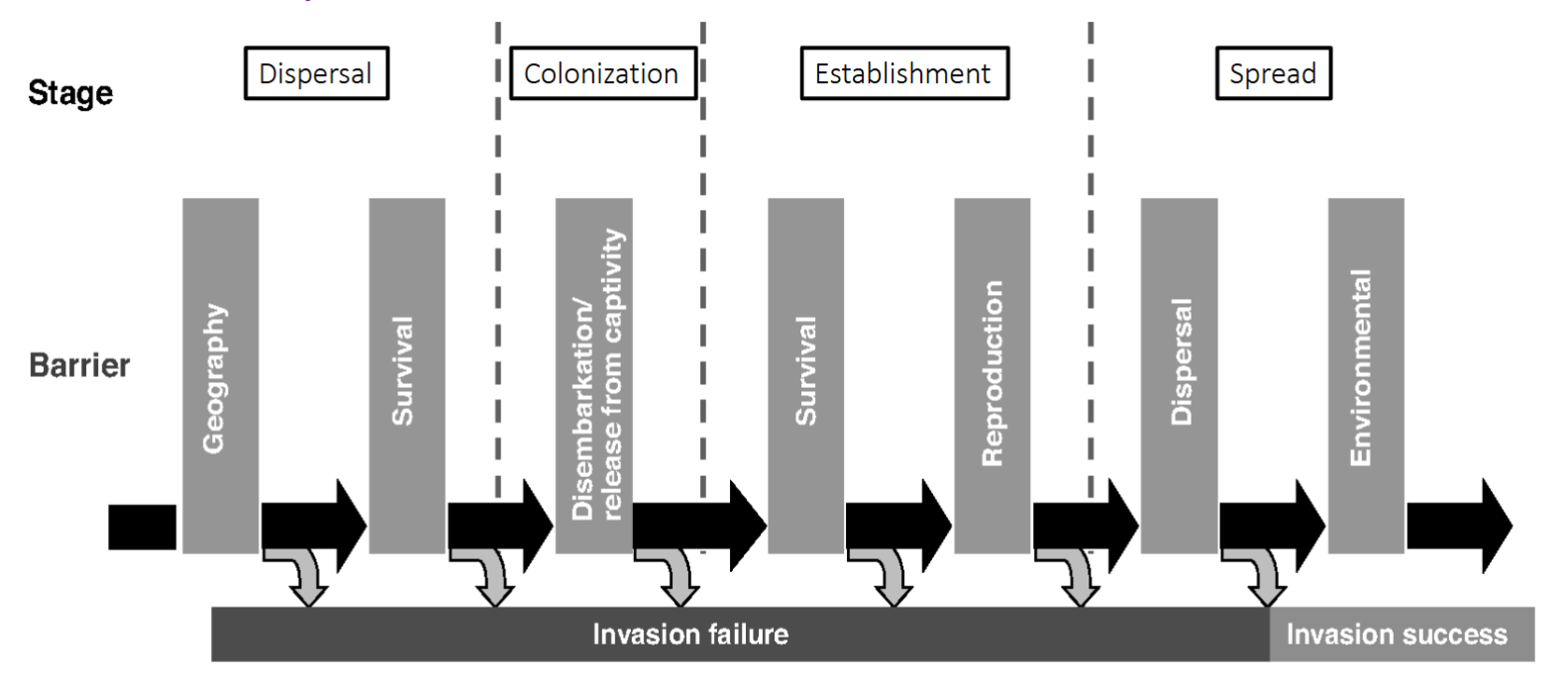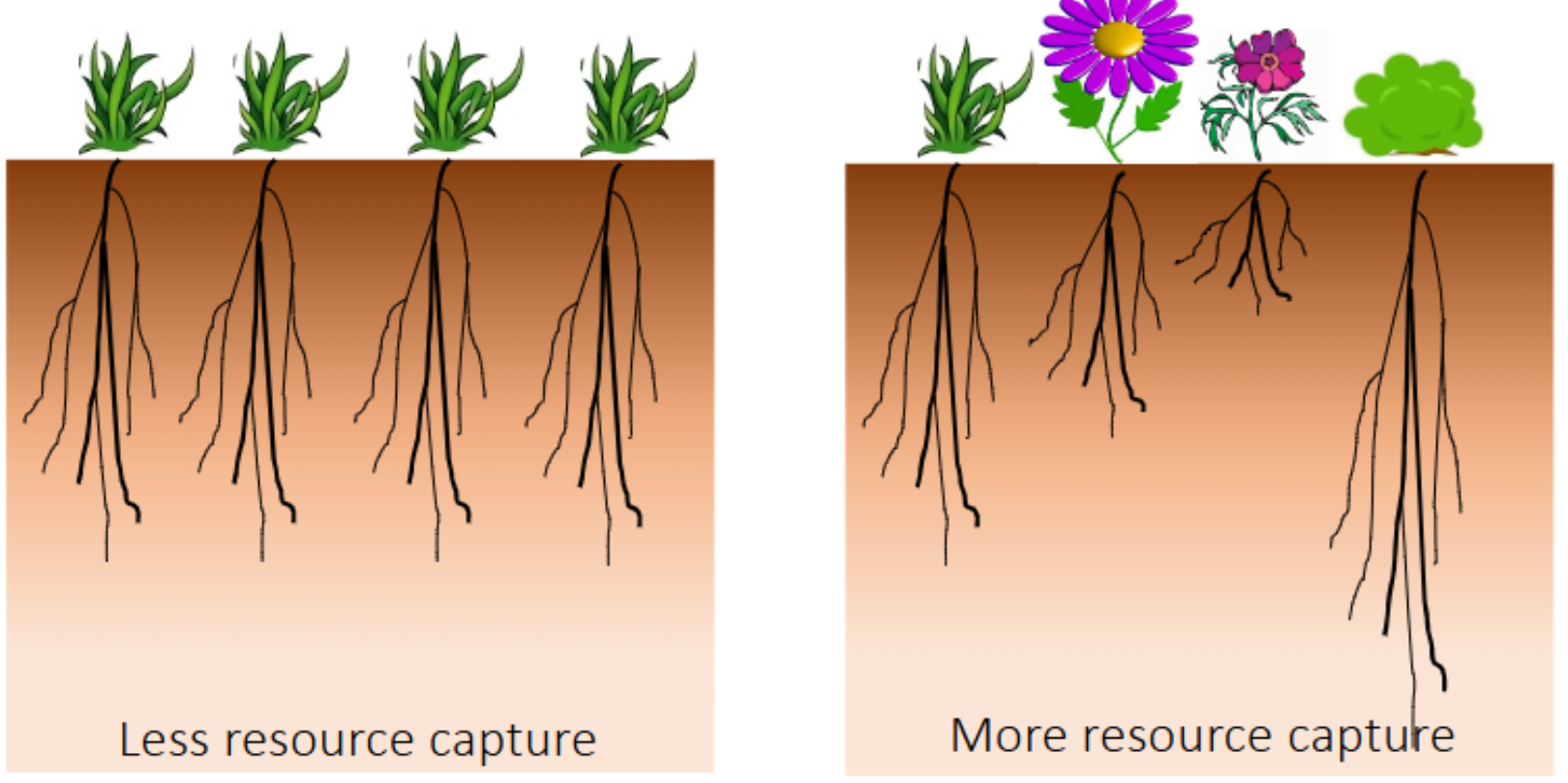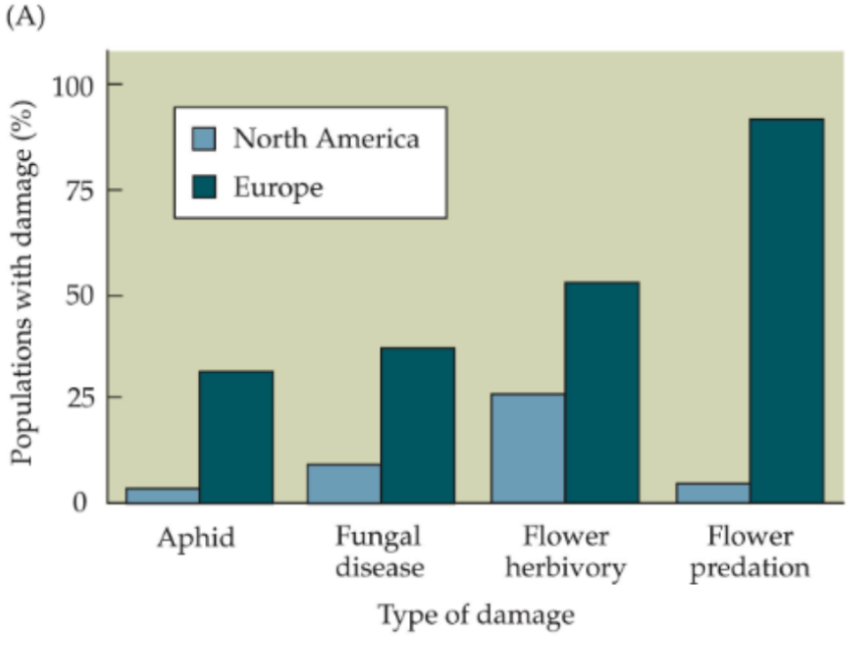Lecture #9 Invasive Species
1/12
There's no tags or description
Looks like no tags are added yet.
Name | Mastery | Learn | Test | Matching | Spaced |
|---|
No study sessions yet.
13 Terms
Invasive species
Non-native species introduced to an ecosystem that spread rapidly, outcompete native species, and cause ecological/economic harm
Potential invasive species effects on biodiversity/ecosystems
Outcompeting native species
Reduces biodiversity
Spreads disease
Changes habitats
What is the invasion process
Multi-stage process where a non-native species is introduced to a new area, establishes a population, and then spreads, potentially causing negative impacts
4 stages of the invasion process
Dispersal → Colonization → Establishment → Spread

Dispersal
Geographic barriers
Propagule pressure
Random chance
Colonization
Abiotic local environment
Propagule pressure
Establishment
Biotic local environment
Genetic variation of species
Species traits
Spread
Dispersal ability
Fertility
Phenotypic plasticity
Propagule Pressure
The quantity (number of individuals) and frequency (how often) a non-native species is introduced to a new environment. It is a key factor in determining whether an invasive species will successfully establish itself.
Biotic Resistance Hypothesis
Biotic composition of the recipient community repels invaders
Ecosystems with high biodiversity are more resistant against invaders
Diverse, stable communities with strong competition and full resource use are better at resisting invasions
Interaction scale = community
Enemy Release Hypothesis
Invaders lose enemies during the invasion process, giving them a competitive advantage
Lack of enemies in exotic environment gives an advantage to invasive species
Suggests that when a plant is introduced to a new region, it escapes its natural enemie
Interaction scale = population

Which native community should prevent invaders?
2nd bc it is more diverse

Based on the enemy-release hypothesis, do you think this plant is native to Europe or North America?
SInce it faces less damage in North America, that’s likely its introduced range - meaning this species is native to Europe